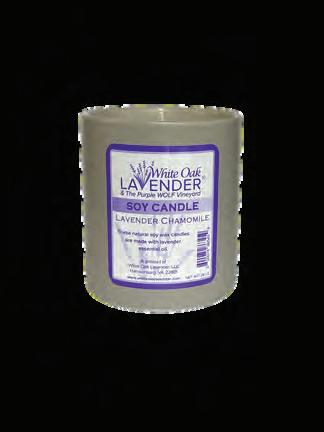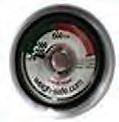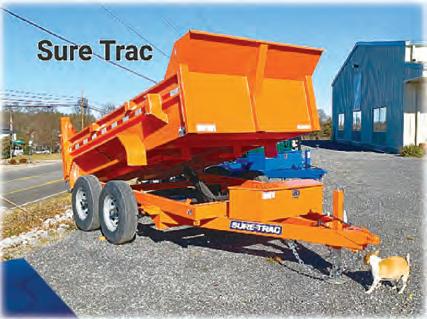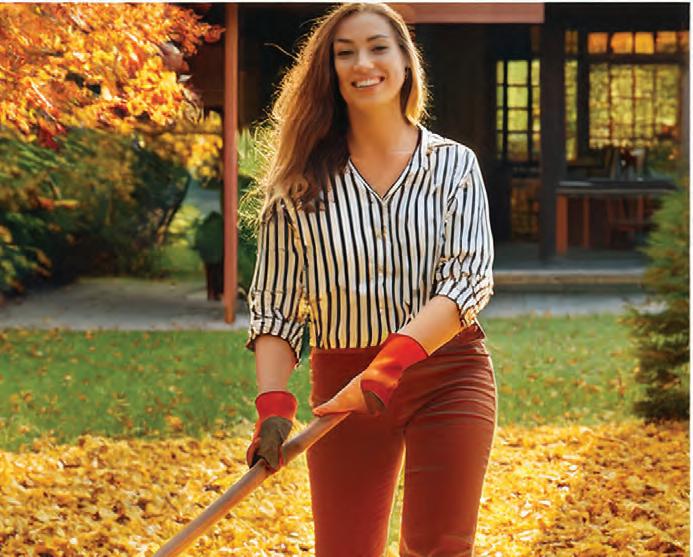
FALL HOME & GARDEN 2025
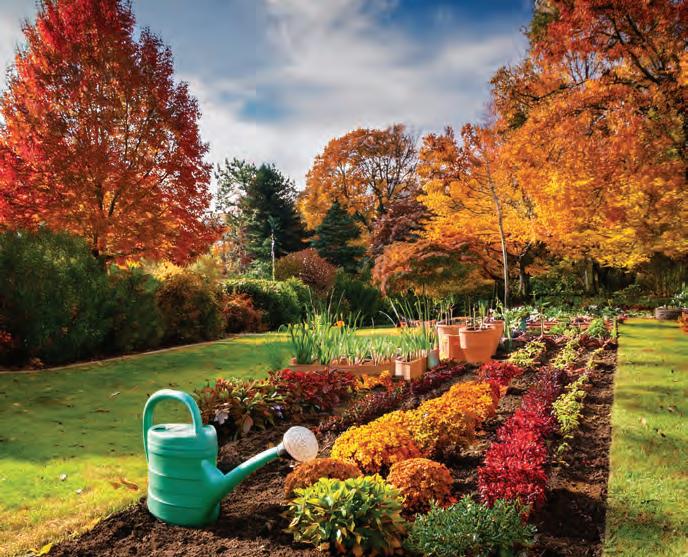
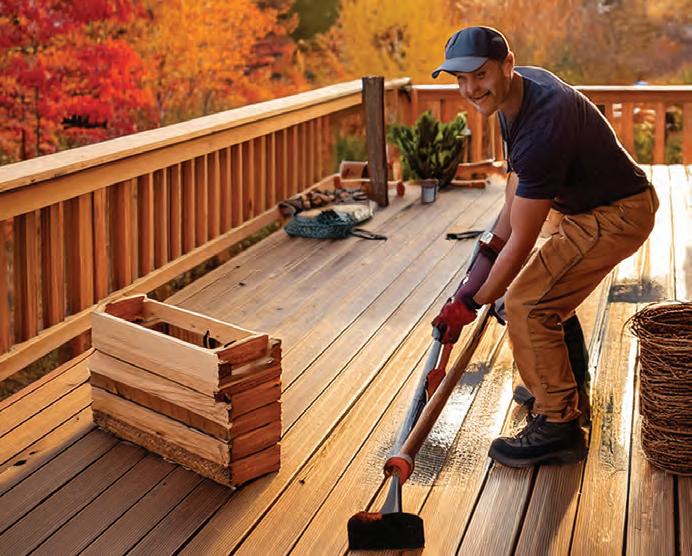
| Wednesday, September 17, 2025







| Wednesday, September 17, 2025




By ANYA SCZERZENIE Daily News-Record
Pam Shank, the owner of the Dayton Market’s Landscapes in Miniature garden shop, began doing outdoor “miniature gardening” more than 20 years ago, adding a little something extra to a bush or flowerbed to catch the eye.
“So, you’d prune up a rosebush and hang a little tire swing in there, and do a little pathway, put a little chair there. And immediately, because it was something miniature in a bigger garden, it made your eye focus on that,” Shank said. “As long as you have something that’s manmade in there, it changes the way you see it, in my opinion.”
Shank started off collecting tiny items in an old-fashioned printer’s drawer as a hobby, but the idea of
miniature gardening really took off when she discovered that plants could be miniature, too.
When I discovered miniature plants outside, that’s what got me going,” Shank said. “Tiny little hostas, little tiny geraniums. The blooms are the size of your smallest fingernail, and they bloom all summer long.”
Shank used to work as a secretary until she turned her hobby into a business about 15 years ago. She has been a fixture at the Dayton Market for over a decade with her tiny garden displays, flowerpots, and selection of small plants.
If you enter Landscapes in Miniature now, you’ll see tiny gardens on display in flowerpots, dishes, and globes. But towards the back of the shop, there are also the parts required for customers to make their own little worlds — from tiny
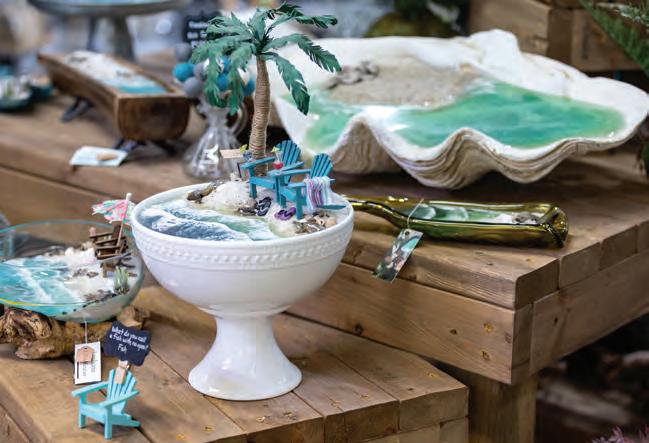

margarita glasses with sand on the rims, to dyed resin ponds, to metal butterflies half the width of a finger.
Shank buys some of these small items from dollhouse furnishers, but many of the things she wants to put in gardens can’t be found for sale, so she and her employees have to make them themselves.
“It’s kind of fun,” Shank said. “It’s fun to be able to come up with an idea to make something that you can’t find somewhere, and then figure out if you can make it.”
Shank began making her own tiny things at an early age. She is the child of a missionary and USAID worker, and grew up all over the world, living in Korea, Laos, the Democratic Republic of Congo, and Jamaica at different points in her childhood.
Although she has always loved small things, all the moving around meant that she didn’t have a dollhouse when she was growing up. Even back then, she had to improvise, making tiny dirt racetracks in her backyard in the DRC for her toy matchbox cars.
“I’ve always loved everything tiny,” Shank said.
Landscapes in Miniature is one of many businesses housed in the Dayton Market, and it has expanded its space over the years, taking over part of the space that once housed Lone Pine Lighting. Just as Shank and her employees have had to adapt to making their own miniature items, they have had to adjust to the new space.
“As we’ve been here longer, we’ve kind of changed what we do,” Shank said. “I do less outdoor miniature gardening now because I don’t have an outdoor display area, so the plants that are grown outdoors aren’t really happy here.”
Moving towards indoor displays has led to some other specialties, like tiny beach-themed decorations and wedding cake toppers with sandy shores
and dyed resin oceans.
“We’ve grown with responding to what people want and what people will buy, and they want indoor plants and indoor gardening, some artificial and some living,” Shank said. “So, we do both.”
Another popular offering is the store’s classes, which became more popular after the COVID-19 pandemic. Shank said the classes have helped bring in more customers, and she enjoys the process of assisting people to create their own “little worlds.”
“We had a whole group come in and one of them made ‘Frog-a-ritaville’ instead of ‘Margaritaville,’” Shank said. “So, he put living plants, and then he had a little margarita and a frog sitting next to it, and we made him a sign. It was just fun, because that was what his happy place was.”
Shank said she considers her skill at making miniature landscapes a “Godgiven gift.”
“I don’t have many gifts,” Shank said. “I can’t sew; I don’t cook well. And I think that’s part of the beauty of it, is that everybody has their own gifts, and they all work together to create our world.”
























By Metro Creative Services
Spring is the season most often associated with lawn care, and for good reason. Grass starts growing in spring, and the season is a great time to fertilize many grasses in the hopes lawns can look their best and endure the hotter, dryer weather of summer.
Spring might mark the time when many homeowners begin tending to their lawns each year, but it’s important to recognize the significance of fall lawn care as well. Grasses vary, and homeowners are urged to identify which type of grass is in their lawn so they can ensure it gets the care it needs before winter’s first frost. Cool-season grasses like perennial ryegrass and Kentucky bluegrass are common in various regions, and the following strategies can help homeowners with these types of grasses tend to their lawns this fall.
• Stick to your recommended fertilization schedule. Homeowners who have been fertilizing since spring are urged to continue doing so in fall at the recommended interval. It’s easy to forget to fertilize in fall thanks to cooler temperatures that don’t call
lawn care to mind and busier schedules after school starts again and summer vacation season ends. But many fertilizer manufacturers advise users of their products to fertilize several times over the course of the year, including in fall. Stick to the intervals recommended on the packaging of the fertilizer you’ve been using, making sure not to forget to fertilize this fall.
• Conduct a soil test. A soil test can determine if the soil is lacking any nutritive elements it needs to come back strong in spring. Certain amendments can restore pH balance if necessary and foster stronger growth when lawns come back in spring.
• Aerate, if necessary. Soil can become compacted over time, and that can cause a range of problems for a lawn. Compacted soil can make it harder for water to reach the roots of grass, which weakens grass and makes it more vulnerable to damage during adverse weather events like drought. Compacted soil also makes it harder for nutrients in fertilizer to get into the soil. Aerating is best left to professionals, particularly in larger lawns, as the job can foster strong root development when done properly.
• Remove thatch where it’s excessive. Thin layers of thatch can benefit lawns by delivering nutrients from glass clippings and leaves to a lawn. However, when thatch is excessive, it can block air, water and even fertilizer from reaching the soil. Thatch often can be removed with a rake, but lawns with especially thick layers of thatch may need to be scarified. Homeowners can take a DIY approach to scarifying or hire a landscaping professional to dethatch the lawn and remove the thatch from their properties.
• Continue to water the lawn. A cool-season grass will continue to require water into the fall. Though the lawn won’t need to be watered as frequently in fall as in summer, various lawn care professionals note cool-season grasses still need roughly an inch of water each week in fall.
• Remove leaves as they fall. Fallen leaves can affect a lawn in much the same way as excessive amounts of thatch, blocking water and nutrients from reaching the soil. So it’s best to remove fallen leaves, especially when they begin to fall in large quantities. Fall is an opportune time to tend to a lawn to increase the chances grass grows back strong in spring.

Blauch

Servicing









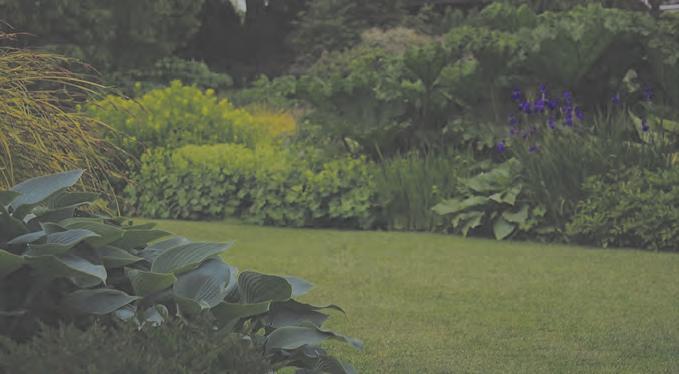






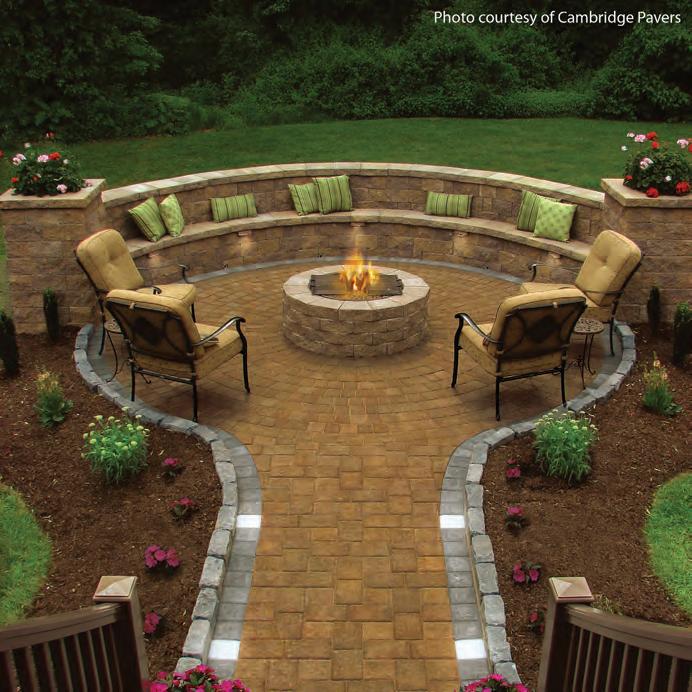


By Metro Creative Services
When the summer entertaining season draws to a close, homeowners need to ensure their outdoor living areas can handle weather that’s right around the corner. Although outdoor furniture and other items tend to be durable, the impact snow, wind and ice can have on them may lead to damage over time. That is why many homeowners take steps to winterize their outdoor spaces and protect their belongings. Here’s a look at how to prepare for the winter to come.
• Furniture: Cover or store furniture to protect it from the elements. Covering it with weather-proof covers can be adequate if storing items indoors is not possible.
• Deep clean: Items that will be covered or stored should be thoroughly cleaned prior to being removed from spaces for the season. Lingering dirt and moisture can cause damage.
• Insulate and drain: Don’t risk damage to pipes, which can freeze and crack in the cold. Shut off the water supply to exterior faucets and drain wa-
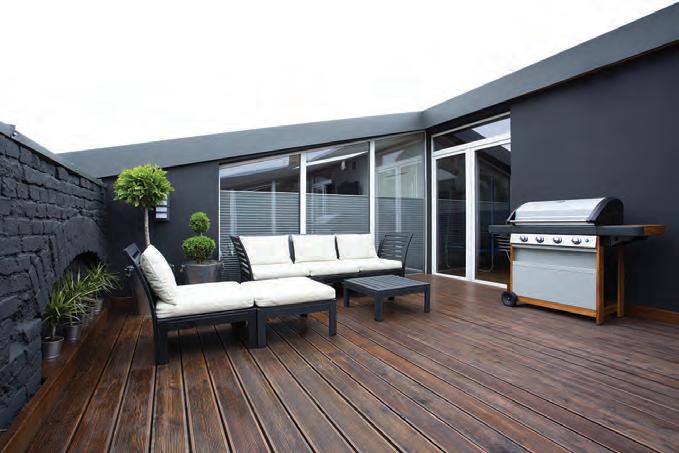
ter lines to prevent pipes from freezing and bursting. Use foam pipe insulation to prevent freezing and cover any exposed pipes.
downspouts are not cleaned, ice dams may form on the roof and cause water damage.
• Inspect and repair: Inspect walkways and driveways for any damage and make repairs now so water will not seep in and cause further issues with freeze-thaw cycles. Consider applying a sealant to protect surfaces from snow and ice.
• Pools and spas: It’s essential to follow the industry or manufacturer recommendations for closing down swimming pools and spas for the season. While covers may not be essential in all climates, covering can help prevent leaves and other debris from getting in the water. Water should be expelled from pipes and tubing to prevent freezing and bursting. If space allows, consider moving the pool pump indoors to prolong its longevity. Turn off the electricity to the outlet where the filter is plugged in.
• Check gutters: Be sure that gutters and downspouts are clear of leaves and any additional debris. If gutters and
• Apply mulch: After cleaning up garden debris, think about applying mulch to garden beds and cover tender plants to protect them from the weather.
There may be additional, region-specific steps to winterize a property, but these pointers are a good starting point to protect outdoor spaces.
By Metro Creative Services
Mosquitoes are winged pests no one wants to have around, except for bats and other animals that eat them for dinner. The World Mosquito Program says mosquitoes can spread a number of nasty diseases, including malaria, dengue, West Nile virus, chikungunya, yellow fever, and Zika. Pet owners likely are aware that mosquito bites can transmit diseases like heartworm. Vector Disease Control International says mosquitoes are some of the most adaptable and successful insects on Earth. Although male mosquitoes only live for six or seven days as adults, females with an adequate food supply can live up to five months or longer. Adult female mosquitoes lay an average of 50 to 200 eggs at one time, ensuring the population continues to thrive. Unless people take adequate precautions, mosquitoes can be anything from a nuisance to a real danger. Controlling mos-
quitoes around the home helps improve health and comfort. These strategies can help.
Mosquitoes require stagnant water sources in order to reproduce. Regularly emptying, scrubbing and turning over items that can hold water can help control populations. This includes flower pots, tires, bird baths, and any other vessels that can hold water. For those with ponds or water features on their properties, circulating the water with a fountain or pump can prevent mosquito breeding. Introducing fish that eat mosquito larvae also can help.
the yard
Mosquitoes love to hide in tall grass and debris. Mowing the lawn and addressing weeds or other natural litter can help deter mosquitoes from hanging around.
Opt for yellow-colored lights outdoors, which are less likely to attract mosquitoes and other flying insects.
Mass Audubon says certain scented plants help to repel mosquitoes. Incorporating them around outdoor living areas can keep mosquitoes at bay. Such plants include lemon balm, eucalyptus, marigold, garlic, sage, lemon verbena, scented geranium, catmint nepeta, lemongrass, and others.
When entertaining outdoors, use a box fan to blow toward people, which will make it harder for mosquitoes to fly and land on people since they tend to be weak flyers.
Professional mosquito control services
Sometimes it may be necessary to

call in the professionals to treat yards to control mosquitoes, particularly at homes that abut streams or other natural areas where a large number of mosquitoes can be found. Treatment solutions often include products that are both safe for people and their pets. Season-long applications will help tame the number of mosquitoes throughout the duration of the warm weather.
Mosquitoes are a part of warm weather, but they don’t have to compromise the comfort of outdoor living spaces.














